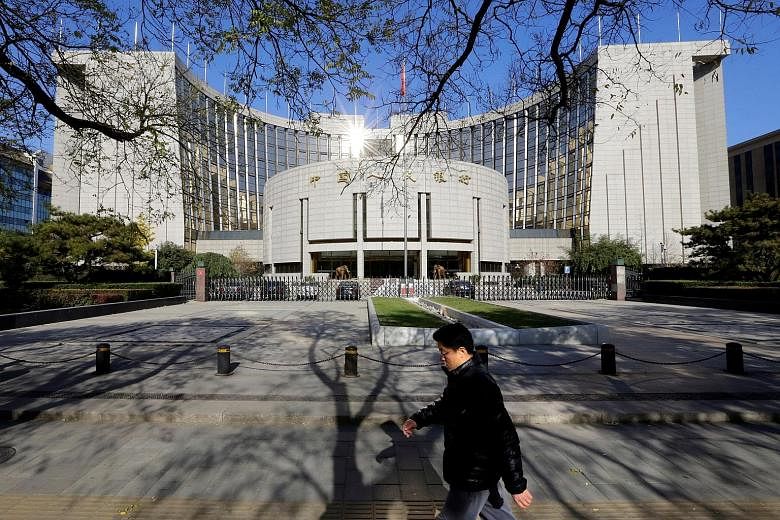BEIJING • China's central bank could adjust monetary policy again in the coming months, in response to changes in the economy or the shifting political agendas following the 19th Communist Party Congress, according to Goldman Sachs Group.
For hints on how monetary policy will evolve, investors should piece together a range of abstract and irregular signals ranging from interbank rates to quarterly reports, Mr M. K. Tang, senior China economist at Goldman Sachs in Hong Kong, wrote in a note yesterday.
Unlike its global peers, the People's Bank of China (PBOC) does not make scheduled policy rate announcements, and speeches are relatively rare.
The reaction function, or how PBOC officials led by Mr Zhou Xiaochuan set policy in response to economic data, may "potentially be recalibrated after the upcoming party transition", Mr Tang said.
That is underscored by the central bank's Sept 30 announcement of a targeted reserve requirement ratio cut for banks to ensure credit reaches small businesses, he added.
President Xi Jinping will gather Communist Party officials for a twice-a-decade leadership reshuffle starting next week that could replace about half of the top cadres.
In the lead-up, the authorities have been reining in debt risk and consistently pledging "prudent and neutral" policy, while leaving the benchmark lending rate unchanged for almost two years.
"Understanding policy intention is not always an easy task in China, given an absence of regular rate-setting meetings and limited explicit guidance from senior officials," Mr Tang wrote. "It does not mean that information is lacking, but it requires a mosaic approach that involves watching and analysing a broad spectrum of cues."
He outlined five broad sets of signals for interpreting policy intent: The PBOC's "official taxonomy", such as calling for a prudent and neutral policy stance, released quarterly, being one. Others are the tone of irregular official comments, with rare deviations from the party line; quantitative liquidity indicators, such as open market operations or changes to the medium-term lending facility; interbank rate spreads, which reflect financial leverage and influence the policy bias; and high-level actions such as changes in the benchmark rate or required bank reserves.
BLOOMBERG

